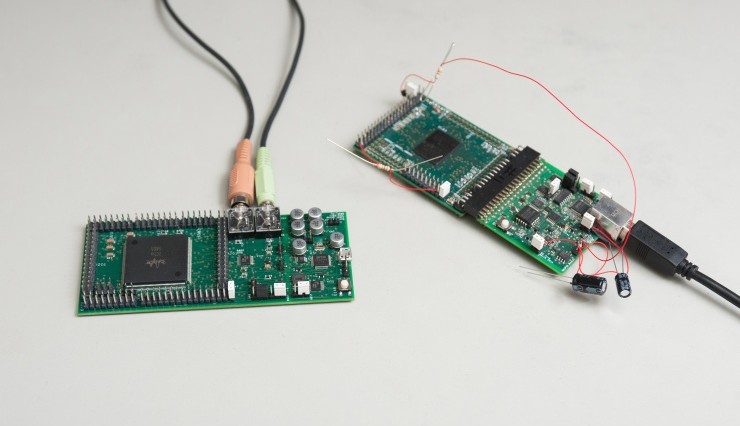Configurable analog processor uses much less power than digital version
March 17, 2016
on
on

Researchers at the Georgia Institute of Technology in Atlanta (USA) have developed a new, configurable analog processor chip that uses only one-thousandth of the power of a comparable digital processor and is much smaller.
The new device, dubbed Field Programmable Analog Array (FPAA) system-on-chip (SoC), uses a combination of analog technology and digital support components. This configuration allows a dramatic reduction in power consumption and device dimensions. The FPAA is also non-volatile, the same as flash memory.
According to the researchers, the new low-power analog device is just as good for many applications as conventional field programmable gate array (FPGA) digital ICs. Professional users familiar with FPGAs will notice that the programming interface of the FPAA is very similar to that of its digital counterpart. However, on the power front the analog version can operate with just a few milliwatts, compared to one watt or more for an FPGA.
The new device, dubbed Field Programmable Analog Array (FPAA) system-on-chip (SoC), uses a combination of analog technology and digital support components. This configuration allows a dramatic reduction in power consumption and device dimensions. The FPAA is also non-volatile, the same as flash memory.
According to the researchers, the new low-power analog device is just as good for many applications as conventional field programmable gate array (FPGA) digital ICs. Professional users familiar with FPGAs will notice that the programming interface of the FPAA is very similar to that of its digital counterpart. However, on the power front the analog version can operate with just a few milliwatts, compared to one watt or more for an FPGA.
Read full article
Hide full article



Discussion (0 comments)